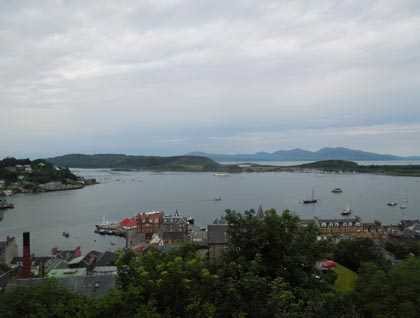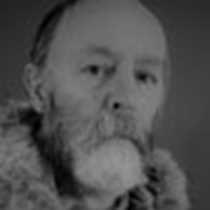The sun was shining on the placid waters of Oban Harbour during breakfast and all looked good for our planned hike through the town to the peculiar monument known as McCaig’s Folly, sitting high on the cliff above the town. This un-missable stone structure is the Roman Coliseum in miniature and was the brainchild of a 19th century local business man, John McCaig. Today it serves as a great viewing platform, looking out over several adjoining waterways, islands and portions of the mainland. The hike was stiff and steep but well worth the effort. The compensation for the earlier exertions was that we returned to town via the Oban Whisky Distillery where we were given not only a guided tour of the whole facility but also a healthy “wee dram” at the end. This definitely revived our spirits and soul!
We then said good bye to little Oban and headed north for the long and narrow sea inlet called Loch Linne. En route Steve gave a talk which unraveled the mysteries of the Jacobites and helped set the scene for several of our future stops, including our scheduled stop for later today – Glenfinnan. But before leaving for Glenfinnan, Lord of the Glens left the open waters of Loch Linne and stealthily slid into the first lock of the Caledonian Canal. This is a very tricky maneuver as the ship has very little clearance on either side of the lock walls but Captain Reading accomplished the navigation with great skill.
The weather was not cooperating with us (heavy rain and wind) but nonetheless we boarded our coach in the afternoon and made the short drive to Glenfinnan. It was here in August 1745 that Bonnie Prince Charlie arrived from France to start what would become the third Jacobite uprising. To commemorate this historical event a tall tower has been erected (many years ago) with a large statue of a Highland warrior atop. Close by is the famous Glenfinnan Railway Viaduct, known the world over by railway enthusiasts and brought to the public eye recently when it was featured in the modern Harry Potter films.
Later in the afternoon we had a briefing from Steve about the activities planned for the next day and this was followed by a very interesting talk from Captain Reading on the history of the construction of the Caledonian Canal. It truly was an amazing feat of late 17th century planning and engineering.
The evening was rounded off magnificently by a local group of musicians, called “Peat Reek,” playing a variety of instruments and singing songs in English and Gaelic. This was authentic Scottish traditional music at its best. All in all, it had been a very full and satisfying day in the heart of Scotland.







